Country
Crash of a Cessna 208B Grand Caravan near Kirensk
Date & Time:
Oct 2, 2010 at 1024 LT
Registration:
RA-67701
Survivors:
Yes
Schedule:
Lensk – Bratsk
MSN:
208B-0932
YOM:
2002
Crew on board:
2
Crew fatalities:
Pax on board:
7
Pax fatalities:
Other fatalities:
Total fatalities:
0
Captain / Total hours on type:
4083.00
Copilot / Total hours on type:
757
Aircraft flight hours:
3203
Aircraft flight cycles:
1423
Circumstances:
The single engine aircraft departed Lensk at 0813LT on a flight to Bratsk. While cruising at 4,200 metres over the cloud layer, the engine failed. The crew elected to divert to Kirensk Airport but was unable to maintain a safe altitude. Eventually, the captain attempted an emergency landing when the aircraft impacted trees and crashed in a wooded area located 37 km west of Kirensk. All nine occupants were injured and the aircraft was damaged beyond repair.
Probable cause:
Engine failure due to the damage of the bearings of the planetary gear from the first stage of the compressor, leading to vibration and destruction of the turbine. It is possible the damage to the bearings was caused by the presence of aluminium or silicon oxide. However, it was not possible to determinate the source of this contamination.
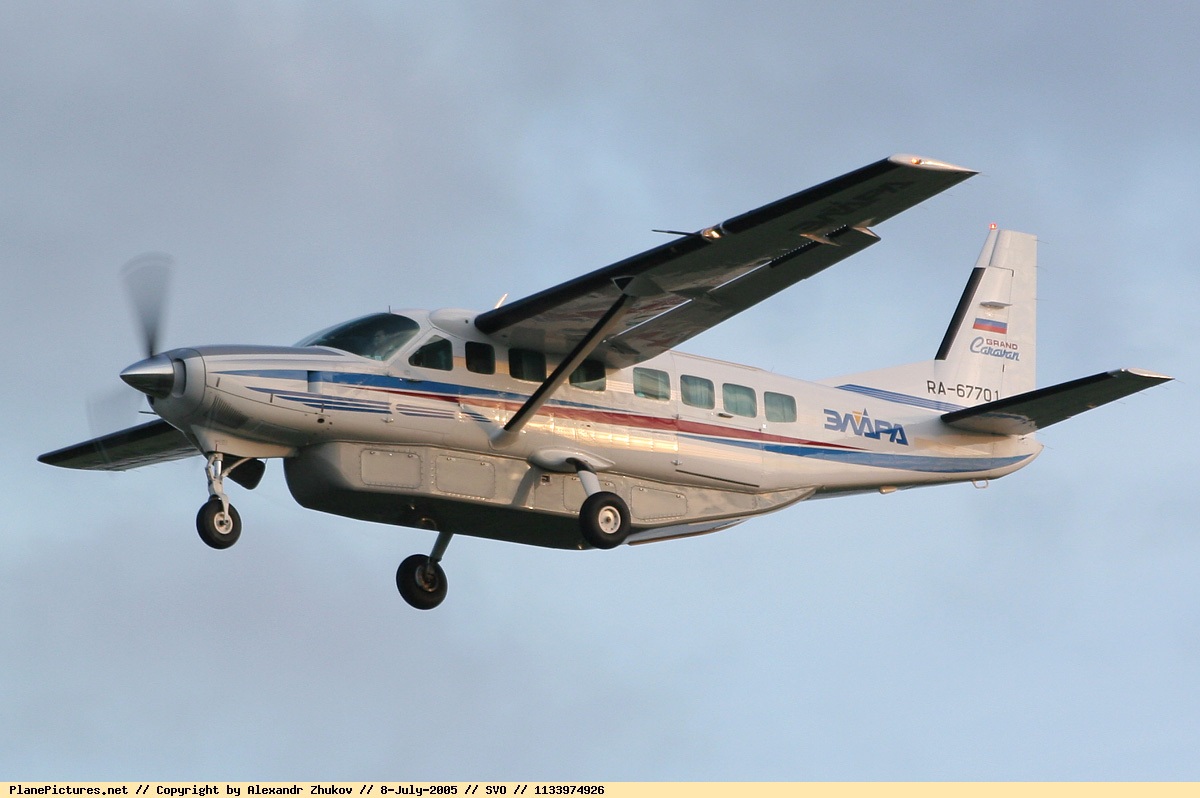

Crash of a Cessna 208B Grand Caravan in Felipe Carrillo Puerto: 9 killed
Date & Time:
Jun 14, 2010 at 1730 LT
Registration:
XA-TWK
Survivors:
No
Schedule:
Felipe Carrillo Puerto-Chetumal
MSN:
208B-0992
YOM:
2002
Crew on board:
2
Crew fatalities:
Pax on board:
7
Pax fatalities:
Other fatalities:
Total fatalities:
9
Circumstances:
Shortly after takeoff from Felipe Carrillo Puerto Airport, while in initial climb, the single engine airplane entered an uncontrolled descent and crashed nose first in a wooded area located past the runway end. The aircraft was destroyed and all 9 occupants were killed, among them 7 members of the campaign team of the candidate for Governor of Quintana Roo, Roberto Borge.
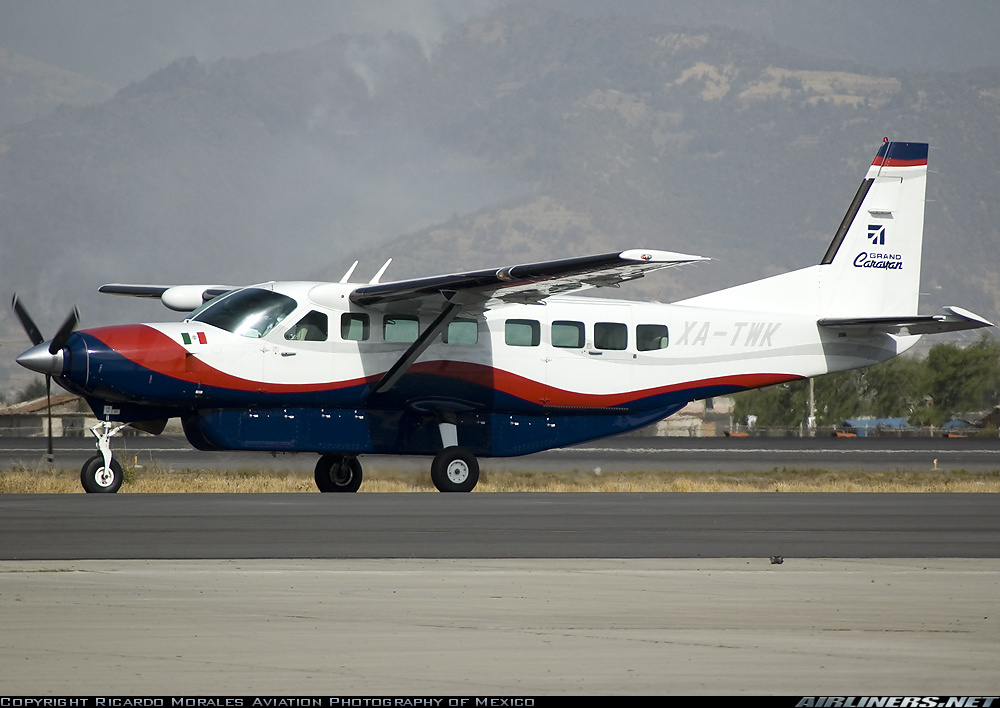


Crash of a Cessna 208B Grand Caravan in Beagle Bay
Date & Time:
Jan 14, 2010 at 0645 LT
Registration:
VH-NTQ
Survivors:
Yes
Schedule:
Broome - Koolan Island
MSN:
208B-0635
YOM:
1997
Crew on board:
1
Crew fatalities:
Pax on board:
0
Pax fatalities:
Other fatalities:
Total fatalities:
0
Circumstances:
The aircraft departed Broome on a charter flight to Koolan Island, WA. At about 0645 Western Standard Time1, when the aircraft was at an altitude of about 9,500 feet, the pilot noticed a drop in the engine torque indication with a corresponding drop in the engine oil pressure indication. The pilot increased the power lever setting but the engine torque and oil indications continued to reduce, all other engine indications were normal. During an interview with the Australian Transport Safety Bureau (ATSB) the pilot stated that he felt a power loss associated with the drop in indicated engine torque. The pilot diverted to the nearest airstrip, which was Beagle Bay, WA. He stated that the low oil pressure warning light illuminated so he shut the engine down and prepared for an emergency landing. The pilot reported that on the final approach to the airstrip he realized that the aircraft was too high and its airspeed was too fast. The aircraft touched down about mid way along the runway and overran the end of the runway by about 200 metres. The aircraft impacted a mound of dirt, coming to rest upside down. The pilot, who was the only occupant sustained minor injuries. Examination of the aircraft by a third party and inspection of the photographs taken of the accident site, revealed that the engine, left main gear and nose gear had separated from the airframe during the accident sequence. There was a significant amount of oil present on the underside of the aircraft, indicating that the oil had leaked from the engine during operation. The
engine was removed from the accident site as an assembly by a third party. The propeller was removed and the engine was shipped to an engine overhaul facility where a disassembly and
examination was conducted under the supervision of the ATSB.
engine was removed from the accident site as an assembly by a third party. The propeller was removed and the engine was shipped to an engine overhaul facility where a disassembly and
examination was conducted under the supervision of the ATSB.
Probable cause:
From the evidence available it was evident that the engine had a substantial in-flight oil leak, which necessitated the in-flight shut down of the engine and a diversion to the nearest available airstrip. The accident damage to the engine in the area of the apparent oil leak precluded a conclusive finding as to the source of the leak. Although the detailed examination of the oil tube attachment lug fracture surfaces was inconclusive, the oil tube remained the most likely source of the oil leak. Evidence from other oil tube failures indicated that significant vibratory loading can cause the oil tube attachment lugs to fracture in the manner observed in the oil tube fitted to VH-NTQ. There was no evidence that the transfer tube was subjected to vibration from a compressor turbine or power turbine blade failure or of an incorrectly fitted engine mount. There was also no evidence of a pre-accident defect that would have caused a reduction in actual engine torque.
Final Report:


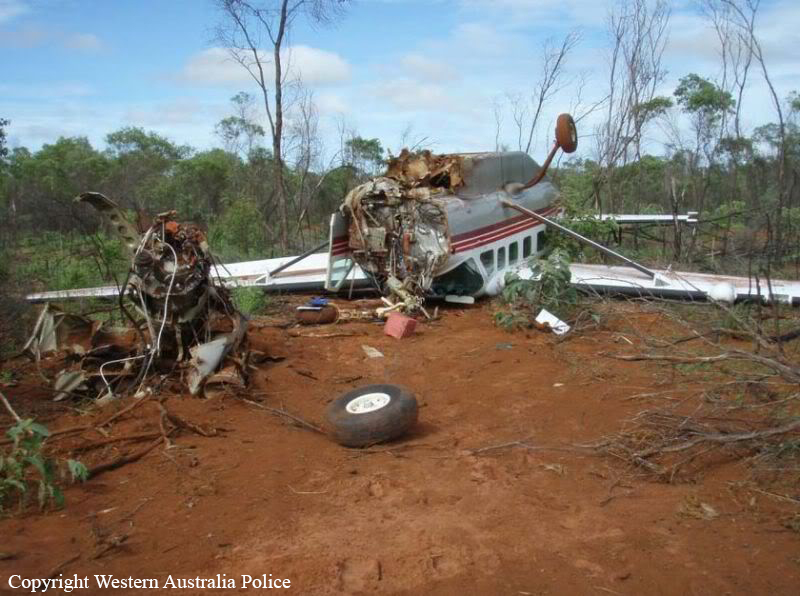
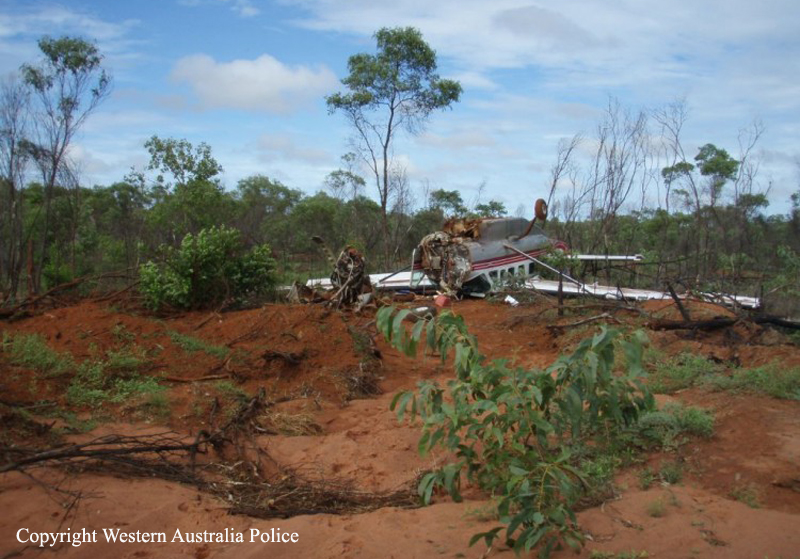
Crash of a Cessna 208B Grand Caravan in Windhoek: 3 killed
Date & Time:
Nov 15, 2009 at 0658 LT
Registration:
ZS-OTU
Survivors:
Yes
Schedule:
Windhoek – Ondjiva – Lubango – Luanda
MSN:
208B-0513
YOM:
1996
Crew on board:
1
Crew fatalities:
Pax on board:
3
Pax fatalities:
Other fatalities:
Total fatalities:
3
Captain / Total hours on type:
206.00
Aircraft flight hours:
12469
Circumstances:
On 15 November 2009, at about 0458Z, and aircraft a Cessna Caravan 208B, with a pilot and three passengers on board, took off from Eros Airport for a flight to Ondjiva, Lubango and Luanda. On board the aircraft were a substantial amount of cargo, which included building materials, meat, paints, bottles of wine etc. which was placed between and on top of the seats as well as in the cargo-pod. The cargo inside the cabin area was not secured. Shortly after takeoff from runway 19, the aircraft turned to the right and then pitched nose up. According to the passenger who survived, the aircraft entered into a left spin shortly after the nose pitched up and second later impacted with terrain, coming to rest facing the direction it took off from. The pilot and two passengers were fatally injured during the accident. One of the passengers survived the accident and was admitted to a local hospital with s spinal injury. The pilot-in-command was a holder of a commercial pilot licence. His medical certificate was valid with restrictions (to wear corrective lenses). Fine weather was reported during the time of the accident with surface wind of 180° at 8 knots.
Probable cause:
The investigations revealed that during this operation the aircraft's take-off weight was exceeded by 629 pounds. The aircraft failed to maintain flying speed and stalled shortly after takeoff, rendering ground impact inevitable.
The following contributing factors were identified:
- This was the pilot's first flight from Eros Airport therefore being unfamiliar with the airport and the environmental phenomena's associated with it (especially taking off from runway 19),
- The pilot made one fundamental error in his weight calculation that he used the incorrect aircraft empty weight,
- The cargo that was in the cabin was packed between and underneath and on top of the seats and was not secured,
- The aircraft took off from runway 19, which was an upslope runway,
- Taking off from runway 19 the terrain kept rising with mountains straight ahead as well as to the left and right,
- The pilot retracted the flaps shortly after rotation, which resulted in an attitude change and performance (aircraft lost altitude), which should be regarded as a significant contributory factor to this accident,
- The pilot was observed to turn to the right shortly after takeoff, which increased the drag on the aircraft as well as the stall speed,
- Harsh anti-erosion rubber paint that was sprayed onto the leading edge of the wings resulted in an increased stall speed,
- Inadequate oversight by the regulatory authority should be regarded as a significant contributory factor to this accident.
The following contributing factors were identified:
- This was the pilot's first flight from Eros Airport therefore being unfamiliar with the airport and the environmental phenomena's associated with it (especially taking off from runway 19),
- The pilot made one fundamental error in his weight calculation that he used the incorrect aircraft empty weight,
- The cargo that was in the cabin was packed between and underneath and on top of the seats and was not secured,
- The aircraft took off from runway 19, which was an upslope runway,
- Taking off from runway 19 the terrain kept rising with mountains straight ahead as well as to the left and right,
- The pilot retracted the flaps shortly after rotation, which resulted in an attitude change and performance (aircraft lost altitude), which should be regarded as a significant contributory factor to this accident,
- The pilot was observed to turn to the right shortly after takeoff, which increased the drag on the aircraft as well as the stall speed,
- Harsh anti-erosion rubber paint that was sprayed onto the leading edge of the wings resulted in an increased stall speed,
- Inadequate oversight by the regulatory authority should be regarded as a significant contributory factor to this accident.
Final Report:

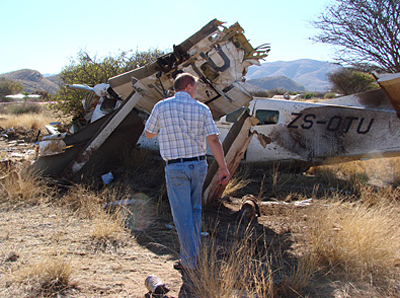
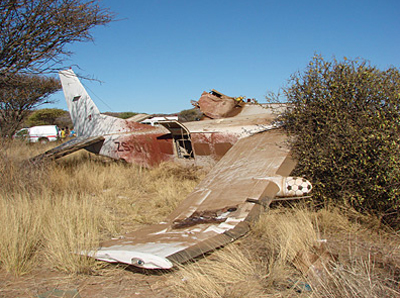
Crash of a Cessna C-98B Grand Caravan near Aldeias Aurélio: 2 killed
Date & Time:
Oct 29, 2009 at 0915 LT
Registration:
2725
Survivors:
Yes
Schedule:
Cruzeiro do Sul – Tabatinga
MSN:
208B-0534
YOM:
1996
Crew on board:
4
Crew fatalities:
Pax on board:
7
Pax fatalities:
Other fatalities:
Total fatalities:
2
Circumstances:
The single engine aircraft departed Cruzeiro do Sul on a special flight to Tabatinga, carrying 7 passengers and a crew of four taking part to a support mission of vaccination for the Ministry of Health. En route, the crew encountered technical problems and elected to make an emergency landing when the aircraft crashed between the villages of Aldeias Aurélio and Rio Novo, in the Rio Ituí, a tributary of the Rio Javari. Two passengers were killed while 9 other occupants were rescued a day later.

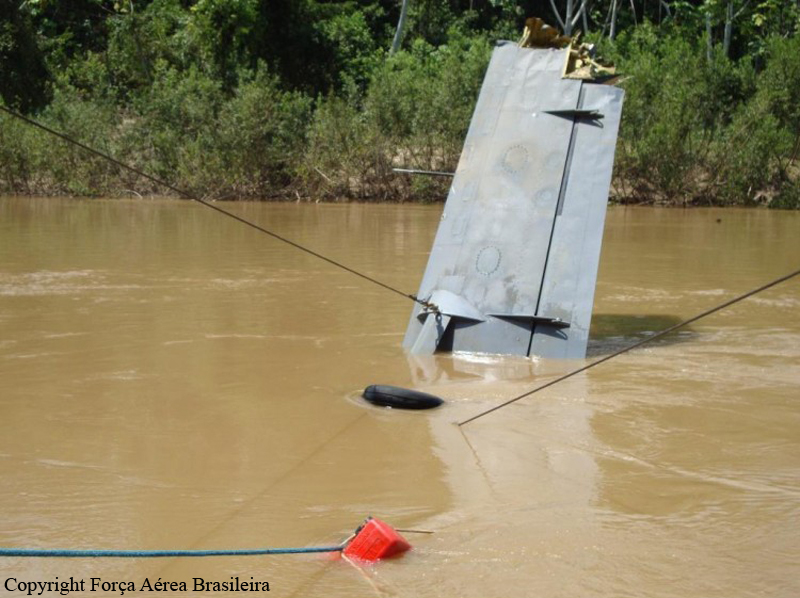
Crash of a Cessna 208B Grand Caravan off La Tortuga
Date & Time:
Aug 26, 2009 at 0814 LT
Registration:
YV1183
Survivors:
Yes
Schedule:
Los Roques - Porlamar
MSN:
208B-0690
YOM:
1998
Flight number:
TUY202
Crew on board:
2
Crew fatalities:
Pax on board:
11
Pax fatalities:
Other fatalities:
Total fatalities:
0
Captain / Total hours on type:
2216.00
Copilot / Total hours on type:
48
Aircraft flight hours:
8392
Aircraft flight cycles:
8897
Circumstances:
The single engine aircraft departed Los Roques Airport at 0734LT on a schedule service to Porlamar, carrying 11 passengers and two pilots. At 0804LT, while cruising at an altitude of 11,500 feet, the engine exploded the vibrated. The crew shut down the engine, declared an emergency and reduced his altitude. Ten minutes later, in a 30° flaps down configuration, the crew ditched the aircraft at low speed about 7,4 km north of La Tortuga Island. All 13 occupants were quickly rescued and the aircraft was damaged beyond repair.
Probable cause:
Engine failure after the disintegration of several blades on the compressor disk. Technical analysis were unable to determine the exact cause of this disintegration.
Final Report:
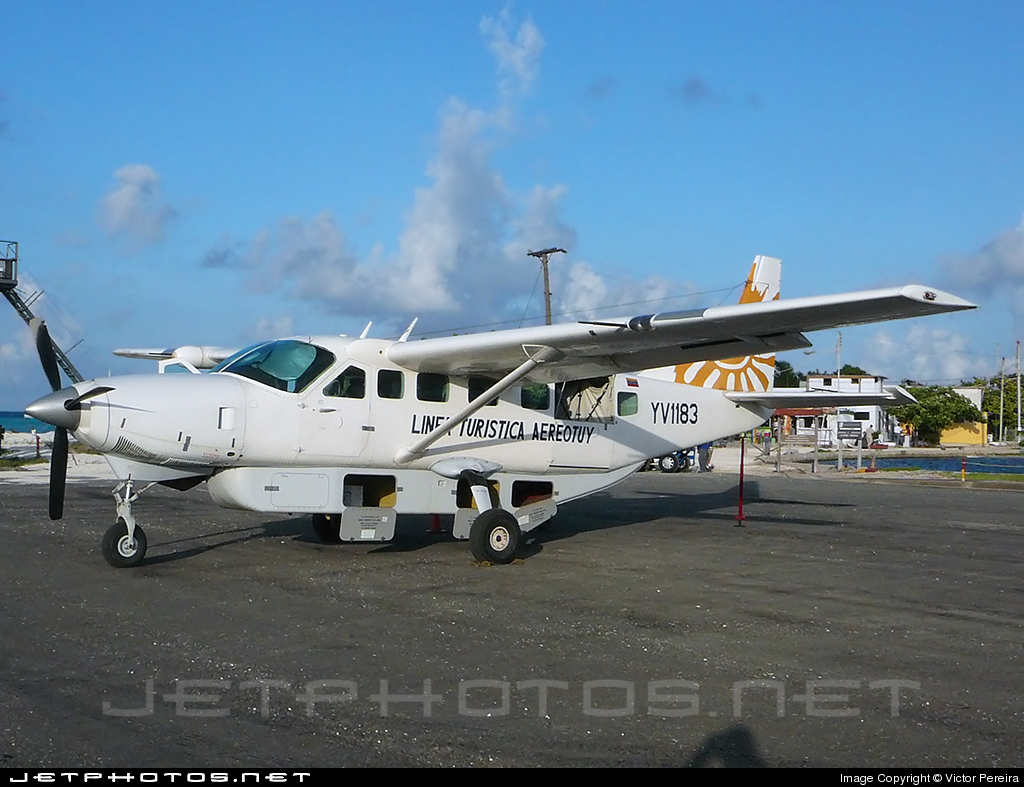
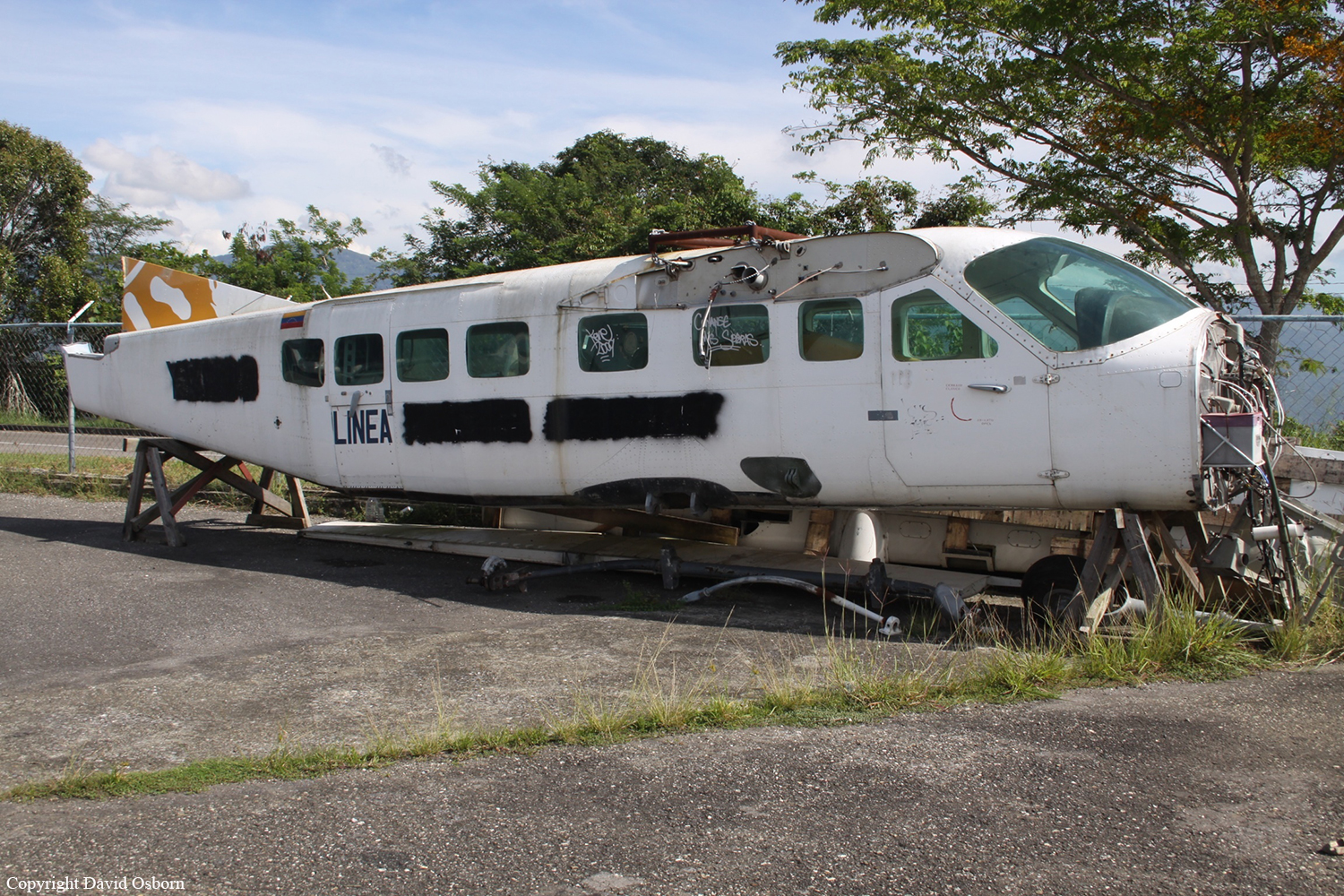

Crash of a Cessna 208B Grand Caravan in Canaima: 1 killed
Date & Time:
Apr 17, 2009 at 1545 LT
Registration:
YV1181
Survivors:
Yes
Schedule:
Canaima – Ciudad Bolívar
MSN:
208B-0695
YOM:
1998
Crew on board:
2
Crew fatalities:
Pax on board:
10
Pax fatalities:
Other fatalities:
Total fatalities:
1
Captain / Total hours on type:
1021.00
Copilot / Total hours on type:
59
Aircraft flight hours:
15753
Circumstances:
After takeoff from runway 36 at Canaima Airport, while in initial climb, the single engine aircraft encountered difficulties to gain height. It collided with power lines and crashed in bushes located 80 metres past the runway end. A young boy aged 6 was killed while all other occupants were injured, seven seriously. The aircraft was destroyed.
Probable cause:
The accident occurred as a result of the inability of the aircraft to take off, affected by the tailwind and water puddles that covered part of the runway, which did not allow speed to build up, crashing into the ground. It is considered that the most likely cause of the accident was mismanagement by the crew, in the sense of failing to make adequate planning and analysis, coupled with overconfidence and lack of identification of hazardous conditions at that time of takeoff. Based on our [JIAAC] investigations, we can infer that there were several contributing causes for the occurrence of this accident. In this order, we can state the following:
- Adverse weather and tailwind conditions associated with the phenomenon.
- Incorrect management by the crew to use only the last third of the runway with the meteorological conditions prevailing at that time.
- Failure of the aerodrome administration to identify and correct poor drainage of the runway.
- Failure of the Autoridad Aeronáutica to monitor safety.
- Rejection by the crew of the concatenated form in which the factors involved in this event developed.
After all the analysis to different causes involved in this accident, we can point to as the main Causal Factor: Human Factor, due to the mismanagement by the flight crew upon takeoff in these conditions. Physical and Material factors included everything related to the prevailing weather conditions, road conditions and lack of services at the aerodrome by the authorities; all of them are considered Contributing Factors.
- Adverse weather and tailwind conditions associated with the phenomenon.
- Incorrect management by the crew to use only the last third of the runway with the meteorological conditions prevailing at that time.
- Failure of the aerodrome administration to identify and correct poor drainage of the runway.
- Failure of the Autoridad Aeronáutica to monitor safety.
- Rejection by the crew of the concatenated form in which the factors involved in this event developed.
After all the analysis to different causes involved in this accident, we can point to as the main Causal Factor: Human Factor, due to the mismanagement by the flight crew upon takeoff in these conditions. Physical and Material factors included everything related to the prevailing weather conditions, road conditions and lack of services at the aerodrome by the authorities; all of them are considered Contributing Factors.
Final Report:
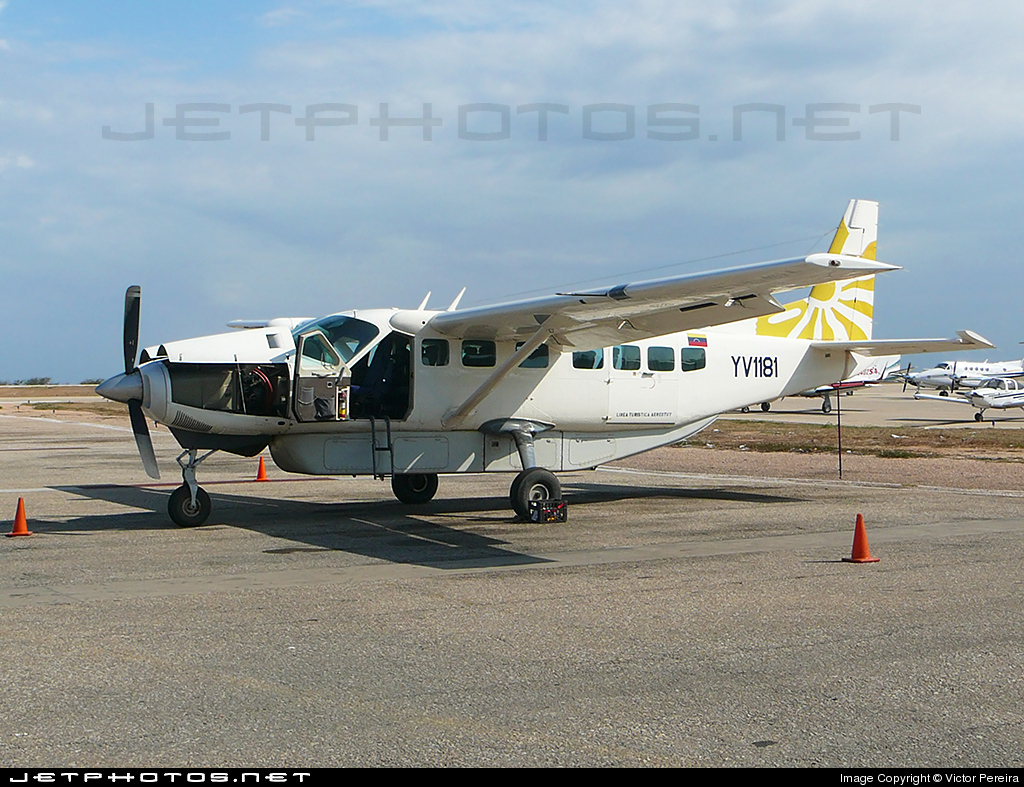
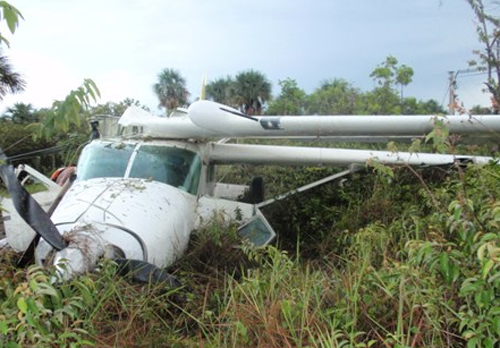
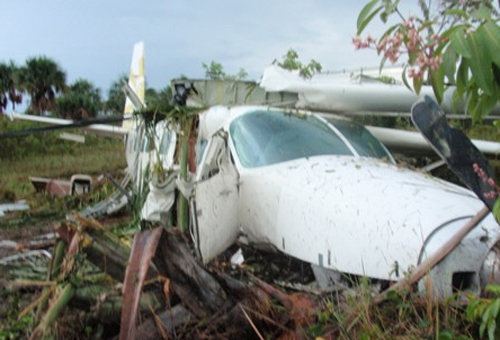

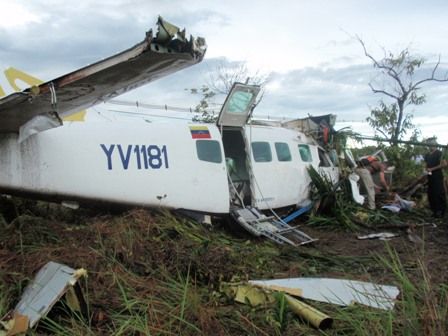
Crash of a Cessna 208B Grand Caravan in Boma
Date & Time:
Feb 11, 2009
Registration:
5Y-BUQ
Survivors:
Yes
Schedule:
Juba – Boma
MSN:
208B-0366
YOM:
1993
Crew on board:
2
Crew fatalities:
Pax on board:
1
Pax fatalities:
Other fatalities:
Total fatalities:
0
Circumstances:
The single engine aircraft was completing a humanitarian flight from Juba to Boma on behalf of the World Food Program, carrying one passenger and two pilots. Upon landing at Boma Airstrip, one of the landing gear collapsed. The aircraft slid for few dozen metres before coming to rest, bursting into flames. All three occupants escaped uninjured while the aircraft was destroyed by fire.






